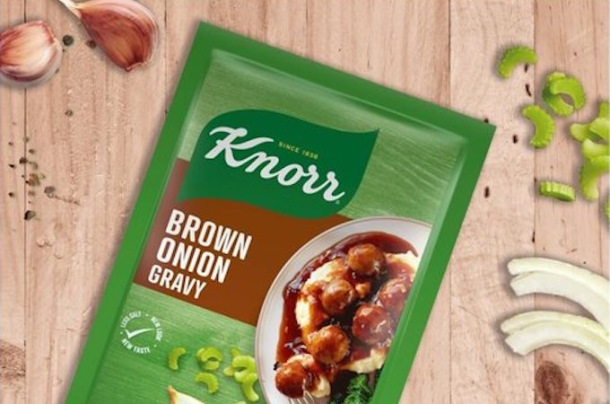It’s time to zero in on food waste
We need to think about how we produce food, what we consume and what we discard, writes Georgina Crouth.
For aeons, parents have guilt-tripped children into eating their dinner because less fortunate children are starving somewhere in the world.
Judging by the bounty seen in restaurants, grocery stores, at markets and on the streets, it’s hard to believe half a billion people in the world are going hungry while the rest are either making terrible food choices or are gluttons.
By 2050, the world’s population growth is projected to be 10 billion (according to the EU Commission’s Health and Food Safety estimates).
Our resources are not infinite but the way we treat them, you’d think electricity comes from the plug, meat from the supermarket, our greens from the greengrocer and water from the tap.
It takes money to produce all that - money that could be used to drive development in other areas and help the needy.
Food production costs water, it produces emissions, reduces biodiversity and drives climate change.
Our marine ecosystems are being degraded, drought is wreaking havoc, forests are disappearing and millions of people the world over are hungry. We need to start thinking about how we manage and produce food, what we eat and food waste.
Worldwide, 2 billion people are obese while half a billion starve. In South Africa, the latest Discovery Health figures show 60 percent of women and 38 percent of men are clinically obese, with 14 million people going hungry daily.
Yet we throw away up to a third of all our food.
Dr Nadene Marx-Pienaar from the food retail division in the department of consumer science at Pretoria University breaks down some staggering figures about our throwaway society. “It’s estimated that 177kg of food waste is generated annually by the average South African (according to a 2013 study on it by the CSIR),” she said.
“Findings from the study done by the Department of Consumer Science at the University of Pretoria on food waste among Gauteng households done in 2014/15 revealed that fruit and vegetables outranked all the other food groups in terms of food mostly wasted by households. Second were cereals and breads (including pasta, rice, cakes and pastries) with dairy products (including milk, yoghurt and cheese) in third place. The fourth most wasted food type is meat, poultry, fish and eggs.
“The self-reported percentage of purchased food wasted indicated that 31 percent of respondents waste more than 30 percent of the fruit and vegetables that they buy, 34 percent waste more than 20 percent of cereals and breads, 27 percent waste more than 20 percent of dairy products and 20 percent waste more than 20 percent of the meat, poultry, fish and eggs that they buy.”
A 2013 CSIR study titled “The magnitude and cost of food waste in South Africa” found the costs to the economy were estimated at R61.5 billion a year or 2.1 percent of our GDP. “At the same time, 70 percent of poor urban households in South Africa live in conditions of food insecurity.
Food is treated as a disposable commodity, especially in developed countries.
“Yet almost one in seven people globally are estimated to be undernourished.
“Food waste does not only impact on food security, but has environmental impacts in the form of wasted resources and emissions,” they noted.
Food waste isn’t only what we throw in the bin though - it includes that which is lost during and after agricultural production; storage; manufacturing; distribution; and consumption, they say.
“The largest costs of food waste occur in food distribution (R19.6bn), followed by processing and packaging (R15.6bn), and agricultural production (R12.5bn). To meet the challenge of feeding growing populations and addressing food insecurity, massive reductions in the amount of food wasted across the food supply chain in South Africa are needed.”
Marx-Pienaar added: “Date codes are the most reported reason for wasting food. This is followed by poor product appearance and poor planning in terms of purchasing, preparation and storage.”
It’s important to note the difference between “best-before” and “use-by”: the former relates to quality and the latter to safety.
“Use-by” dates mean food can be consumed until that date - after that, if it hasn’t been frozen or preserved, it’s not fit for consumption.
If food has reached its “best before” date, it’s still safe to eat but it may not be at its best. Best-before dates are important guidelines to ensure food safety but they’re not cast in stone as many foods are still good to eat days - sometimes weeks - after they’ve expired.
Some foods, such as cold meats and ready meals, could become dangerous but other foods - such as honey, cornflour and sugar - don’t go off and the dates have the psychological effect of encouraging consumers to throw out perfectly good food.
Responsible retailers and manufacturers are doing their bit to mitigate this wastage: last year, their donations enabled FoodBank to feed 170 000 people with 3 350 tons of food and helped 550 non-profit organisations. That’s R23.5m worth of food reclaimed.
Lamees Martin, FoodBank SA’s marketing and communications officer, explained: “We collect edible surplus food from manufacturers, wholesalers and retailers and redistribute this food to verified NPOs that collectively feed thousands of hungry people daily.
“As a recipient of food donations, FoodBank SA has a responsibility to its beneficiaries to carefully check all products received at its warehouses.
“Hence we have quality checks for handling food donations, such as checking all dates on all products and rejecting expired stock.”
France and Italy have recently been in the news for introducing laws governing food waste. In France, retailers are fined for throwing away food; in Italy, they’ll soon be incentivised for donating unsold food.
As consumers, we have the power to vote with our forks to reduce waste. If we all put more thought into what we were eating (and doing so sustainably), preparing real food at home (rather than buying processed food) and wasting less, we’d not only save resources but we’d also be teaching our children to prepare for a future in which there’s enough to go around.
Wise up. Here’s how!
Helpful sites: Visit savethefood.com for food storage tips; www.slowfood.com for information on responsible consumption and local producers (or find your local Slow Food chapter) and follow Love Food Hate Waste; Stop Food Waste; Ugly Fruit & Veg; FoodTank; FoodInsight.org and others on Twitter.
Slow in Joburg: On Saturday, Slow Food Johannesburg will be at the Soweto Theatre, with three events: a conference (“Growing and Producing Food in Soweto and Johannesburg: Urban Farmers Speak” and “Buying Food in the City; how to get a healthy and fair deal”); a market, where urban farmers from Soweto and Orange Farm will be selling their produce; and an “eat-in” (an Nguni cow has been slaughtered for a nose-to-tail competition between teams of chefs and local gogos - pre-booking only). To book, visit www.webtickets.co.za or www.sowetotheatre.com.
Read up: Staff scientist at the US Natural Resources Defense Council Dana Gunders’s book the Waste-Free Kitchen Handbook offers suggestions to change behaviour around waste. Order at amazon.com. For a chef’s perspective, I can highly recommend Jamie Oliver’s Save with Jamie, which gives wonderful tips on shopping smart, cooking cleverly and wasting less.
Georgina Crouth is a consumer watchdog with serious bite. Write to her
|
Special |
Price in the six weeks prior to the special |
|||
|
Price in rands |
Checkers |
Makro |
PnP |
Shoprite |
|
R46.90 from Pick n Pay |
R58.12 |
R55.95 |
R68.99 |
R63.49 |
|
R21.90 from Pick n Pay |
R25.58 |
R25.22 |
R20.77 |
R25.99 |
|
R69.99 from Shoprite |
R79.45 |
R79.30 |
R81.26 |
R83.58 |
“This is one tactic that retailers use to make shoppers believe they are getting genuine specials – in fact if they shop regularly at one chain they have already paid a higher price than the average in the weeks and months preceding the Special.
“Another tactic is to offer a product at a ‘Special’ price when in fact in the weeks preceding the promotion a number of their stores have actually been charging a lower price than the Special. The consumer ends up spending more on the Special than if he were paying the normal price,’ Baker said.
She noted that inn mid-August Pick n Pay offered Tastic 2kg rice at a Special price of R21.90. In fact, in July and early August, many Pick n Pays around the country were selling Tastic at under R20.
Are South Africans Specials junkies?
It is well documented that trade and consumer discounts set manufacturers and retailers at odds with each other and add to the overall cost (estimated at more than 2.5%) of the product.
“In a truly competitive arena, the chains would be outdoing each other to cut prices on the same products. Instead, we find that Specials are carefully orchestrated between one chain and the next, so that even when hundreds of items are being promoted, they are not the same as the hundreds that are being promoted that week by the other chains,” Baker said.
Sainsbury’s, the second largest chain in the UK, has been reducing the number of promotions it offers consumers and cutting the regular price of many healthy foods as a result, Baker said.
In an article in the Guardian on 4 August, Paul Mills-Hicks, the food commercial director of Sainsbury’s, said: “Since 2014, we’ve been working hard to remove promotions and invest money in regular lower prices. In doing so, we have made hundreds of fresh and healthy products affordable all of the time and our fresh produce sales are growing as a result.”
Baker urged consumers to be more savvy when it comes to weekly shopping.
“Most people who shop regularly have an idea of what a price should be. You can be pretty certain when an advertised promotion results in a massive price drop that you were being overcharged for that product before.”
“Shop for similar items and house brands and look for products which your own branch is promoting perhaps because it has an excess of stock. Avoid the advertised special – if you have the willpower.”
Viccy Baker is founder of Red Gekko’s Retail Price Watch, a consumer website dedicated to providing the latest up-to-date information on consumer good prices across South Africa. You can view and compare products on various prices here.
News Category
- International retailers
- On the move
- Awards and achievements
- Legislation
- Wine and liquor
- Africa
- Going green
- Supplier news
- Research tools
- Retailer trading results
- Supply chain
- Innovation and technology
- Economic factors
- Crime and security
- Store Openings
- Marketing and Promotions
- Social Responsibility
- Brand Press Office
Related Articles

Warning of Eskom collapse

Knorr recalls brown onion gravy sachets

Eskom CEO shares good news about load-shedding

Tax warning for South African businesses


